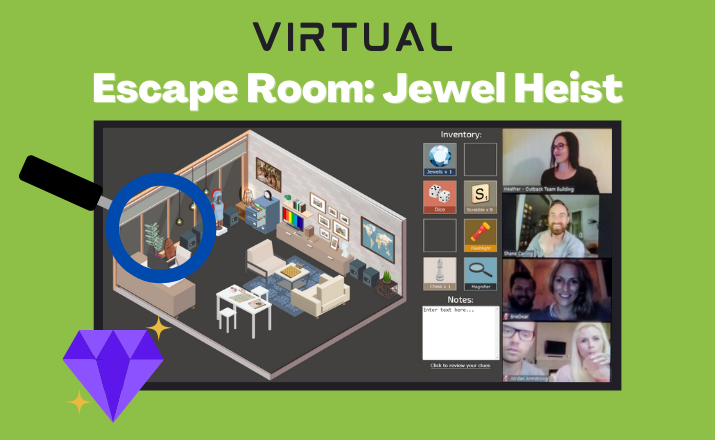The 9 Biggest Remote Leadership Fails You Need to Avoid

As remote employment becomes the new norm, so too are remote leadership fails. And while leaders adapt to the times, there are pitfalls to avoid in order to help your virtual team succeed.
The professional world has been on a wild ride since early 2020, to say the least. Pre-pandemic, remote work was the exception rather than the rule. Fast forward to May 2021, and 70% of companies were planning to adopt the hybrid work and an astounding 97% of employees expressed the desire to work remotely in some capacity.
While a pretty compelling case could be made that these changes will have positive effects on employee engagement, they’ve also thrown a curveball at business leaders who are trying to figure out how to do their jobs from a distance.
This hasn’t been easy, though. Many leaders have been able to rise to the occasion and pivot seamlessly to remote work. But many others have failed in their attempts and are negatively impacting their teams as a result.
In this article, we’ll take a look at the biggest and most common remote leadership fails that you need to avoid in 2021 and beyond.
- 1. Believing Remote Work Reduces Performance
- 2. Measuring Hours Over Results
- 3. Lacking Self-Confidence and Trust
- 4. Still Trying to Micromanage Employees
- 5. Neglecting the New Systems That Remote Teams Need
- 6. Prioritizing the Wrong Kinds of Communication
- 7. Ignoring Work/Life Boundaries
- 8. Neglecting Team Morale and Company Culture
- 9. Failing to Evaluate Performance
1. Believing Remote Work Reduces Performance

It’s a common misconception that remote employees are less productive than their in-office counterparts.
In fact, 38% of managers feel that remote workers perform worse than those in the office and 41% are skeptical that remote workers can remain motivated over time.
But when you consider that an analysis of data collected through March 2021 found that nearly 6 in 10 workers reported being more productive when working from home, it highlights a discrepancy between perceptions and reality.
This can lead to a number of challenges, including those highlighted in the next three points.
2. Measuring Hours Over Results

If you’re leading a team remotely and you’re still measuring success by the numbers of hours your team is “online,” you’re falling victim to a major remote leadership fail.
The difference with remote work is a lack of visibility. In traditional office settings, there’s a belief that if you can see your team, they must be getting work done.
But the truth is they could just as easily be scrolling through Facebook then flipping to a new tab when you come by.
Instead of measuring success by how long your employees appear to be online, measure it by the volume and quality of work they achieve and if they’re delivering what needs to be done when it needs to be done.
One of the great perks about remote work—and one of the things people love most about it—is the ability to have some flexibility in their workdays to take care of personal tasks, if they need to. So, consider giving some leniency and flexibility with their time, so long as they’re getting their work done.
A great performance management system helps a lot with this, but we’ll touch on that in greater depth shortly.
3. Lacking Self-Confidence and Trust

There’s no doubt that transitioning to remote leadership can be a daunting proposition. It’s natural that leaders might feel less confident in their abilities to do so, especially in the early stages. But a study from the Harvard Business Review helped to illustrate just how serious of a problem really is.
It indicates that:
- 40% of supervisors and managers have low self-confidence in their ability to manage their workers remotely
- 23% disagreed with the statement, “I am confident I can manage a team of remote workers”
- 16% were unsure about this ability
Considering that leaders are supposed to pave the way forward and inspire their team members, this is extremely problematic.
As an organization, it’s vital for leaders to be supported in their development to ensure they’re able to do the best job possible. This can be done with group skills training workshops that focus on sharpening soft skills.
Here are a few that can help.
Situational Leadership Styles

Learn how Situational Leadership Styles can help leaders perform even more effectively by identifying their own inherent styles and understanding how their employees want to be led.
Emotional Intelligence

With the Emotional Intelligence (EQ) leadership training and development program, you can develop your team’s self-awareness and social skills. This includes increasing your self-awareness, learning how to self-regulate behaviors, developing better social skills for leadership, using emotionally intelligent motivators, and developing a greater sense of empathy.
Confident Decision Making

Help your team make hard business decisions with more confidence by learning to tackle complicated choices and break down the decision-making process, learning to make good decisions, recognizing decision-making traps, and becoming more accountable.
4. Still Trying to Micromanage Employees

Even when you’re working in the office, micromanagement is a big problem that can prove perilous for employee morale and productivity as a result.
In the context of remote work, it can be disastrous. And there are a few telltale signs that you might be micromanaging your team, including:
- Restricting your team’s decision-making
- You take longer than you should to complete projects
- You nit-pick and seek errors
- You avoid teaching
- You don’t ask for feedback
Want to know exactly how risky micromanaging can be? A study showed that 69% of employees considered changing jobs because of micromanaging.
This is a major leadership fail that should be avoided at all costs. But there’s good news: the right systems and tools can help you to resist any micromanaging urges by giving you visibility into your team members’ tasks.
More on that in the next section.
5. Neglecting the New Systems That Remote Teams Need

If you’re trying to take on a new way of working while using the same old systems you’re used to, all you’re doing is trying to fit a square peg in a round hole.
Remote work requires new systems, tools, and ways of working in order to be successful.
This includes but isn’t limited to:
- Communication tools
- Collaboration tools
- File-sharing tools
If you’d like to get an in-depth understanding of the optimal tools and systems you need for remote employees, we’ve got a resource that will teach you all you need to know—4 Tips and Tools to Equip Your Remote Employees for Success.
6. Prioritizing the Wrong Kinds of Communication

Communication is especially vital in remote work scenarios, but there’s an important distinction to be made between the right and wrong kinds of communication.
The Right Kinds of Communication
As a remote leader, you need to prioritize the forms of communication that empower, inspire, and reinforce your team.
Here are a few examples of this.
“Watercooler Talk”
Social engagement is one of the key fibers in the fabric of a strong company culture. In an office environment, this happens in passing in the hall or in the lunchroom, for example. In a remote work setting, it’s much harder to have these vital interactions. So, it’s wise for remote leaders to ensure they’re encouraging chit-chat, such as on Slack or Microsoft Teams, rather than discouraging it. Even incorporating team building icebreaker questions into your team’s virtual chat channels each day can help to keep things interesting.
Informal Check-Ins
As a leader, not every interaction with your team needs to be formal. Sometimes, it’s smart to simply check in with your employees to see how they’re doing, how they’re feeling, and if they need support. It can go a long way in creating a positive team dynamic. It can also keep you in the loop without making your employees feel you’re pressuring them. In fact, 46% of employees said the most successful managers checked in with them frequently and regularly.
The Wrong Kinds of Communication
On the other hand, there are some means of communication that can actually be harmful to employee morale and wellbeing.
Overbooking Meetings
When remote leaders lack trust in their team members, they have a tendency to jam-pack people’s calendars with meetings so that they can feel they have a level of visibility. But this can backfire: employees can begin to experience remote meeting fatigue and even lose valuable time to work on their core work.
Sending Too Many Emails
You’ve probably said, “this email could’ve been a meeting.” Well, in the remote world, in many instances, “this email could’ve been a Slack message.” When in-person communication is reduced, it can be easy to opt for sending a lot of emails. But this can be inundating and overwhelming. Before sending an email, ask yourself if it could be better suited for a quick direct message.
Unrealistic Expectations for Response Times
For many leaders, the expectation they have is for near-instant responses to emails and messages from their remote employees. But this is the wrong way to approach it. Instead of expecting instant responses, outline expectations for how long is realistic and reasonable for your team to answer your emails and return phone calls.
If you’re looking for ways to improve your team’s verbal and written communication skills, you might want to enlist a group skills training workshop like Clear Communication as a means of ensuring your remote communication is efficient and productive.
7. Ignoring Work/Life Boundaries

As much as remote employees enjoy a better work-life balance (nearly 3 in 4 employees echo this sentiment), working from home can be a double-edged sword.
After all, when your workspace and your living space are one in the same, it can feel difficult to fully disconnect. Whereas people working in the office have a physical and mental distance between where they work and where they live, remote workers always have “the job” nearby.
For remote leaders, failing to encourage work-life boundaries is a dire mistake. It’s not enough to simply allow your team to sign off and have their personal space. You need to be a champion for it, encouraging them to disconnect fully when the day is done.
8. Neglecting Team Morale and Company Culture

One of the greatest challenges that remote teams face is maintaining a strong team morale and company culture.
Finding ways to proactively engage your remote team is a critical leadership responsibility.
While this might feel like a daunting undertaking in a virtual setting, the truth is that it doesn’t have to be.
You can do this in a number of ways.
Coffee Breaks and Happy Hours
One of the most enjoyable things about working in an office environment is the social aspect–walking to a nearby coffee shop or going for after-work drinks with colleagues. These are likely the little things that you’re missing. You can leverage your virtual tools do replicate these experiences, such as scheduling 15-minute meetups for coffee once or twice a week and setting aside an hour after work once a month for a virtual happy hour.
Virtual Escape Room: Jewel Heist

If you’re looking for a more formal and structured virtual team building activity, you might like one like our Virtual Escape Room. Here’s the premise: there’s been a robbery! Someone has masterminded a heist to steal a priceless collection of precious jewels, and it’s up to you and your team to recover them before time runs out. Together, you’ll need to uncover hidden clues and solve a series of brain-boggling challenges that require collaboration, creative problem-solving, and outside-the-box thinking. But be quick! The clock is ticking before the stolen score is gone forever.
Recipe Swap
Everyone’s got to eat, so why not incorporate a little bit of team building into your weekly cooking regime! Start off by asking each person on your team to share their favorite recipe. It could be breakfast, dinner, dessert – the choice is up to you! Once everyone has submitted their recipe, challenge your colleagues to try one out each week. The entire group can tackle the same one, or you can all try your hand at something different. Ask your team members to make the recipe before the end of the week and then block off some time to share how it went with each other on a Friday.
Virtual Trivia Time Machine

Step into the Outback Time Machine and take a trip through time, from pre-pandemic 21st century through the decades all the way to the 60’s.
This exciting, fast-paced virtual trivia game, packed with nostalgia and good vibes, is guaranteed to produce big laughs, friendly competition, and maybe even some chair-dancing.
Your virtual game show host will warm up guests with a couple of “table hopper rounds” (breakout room mixers) and split you out into teams. Within minutes, your home office will be transformed into a game show stage with your very own game show buzzers!
Virtual Clue Murder Mystery

Using video conferencing software alongside Outback’s proprietary app, your group will split into teams, examine clues, review case files, and channel their inner detectives as they race against the clock to solve the mystery of who had the means, motive, and opportunity to murder Neil Davidson.
Virtual Social Shuffle

Get to know your colleagues and build better connections with this ultra-social virtual team building activity for remote groups. Your group will learn fun facts about one another as you tackle a series of themed challenges together and engage in exploratory conversations.
If you’re looking for even more ideas, check out our list of virtual team building activities to engage remote employees.
9. Failing to Evaluate Performance

In a remote work environment, failing to update your performance management systems can be a critical failure leading to reduced employee morale, increased turnover, and burnout.
Measure Success Based on Output
As we mentioned earlier in the article, remote managers lack visibility into whether their team member is even awake at their desk. Great remote performance management focuses on output and results rather than time clocked.
With remote employees, you need to measure them on quantifiable factors, such as:
- Whether they’re delivering quality work in-full and on-time
- If they are making themselves accessible to their team when needed
- If they are fulfilling the obligations of their role
It’s vital to clearly define and communicate these expectations from the outset.
Be Structured
Whether you conduct monthly, quarterly, bi-annual, or annual performance management, it needs to be structured. A strong performance management document app that is managed by the employee and supported by the manager is an ideal way to keep everyone on track. It’s wise to give a detailed overview of an employee’s career trajectory and what they need to achieve to reach the next level during their performance management meetings.
Prioritize Clear, Concise, Two-Way Feedback
Trust is important in remote performance management. And one of the best ways for managers to build trust with their team is to seek feedback as much as they give it. You shouldn’t settle for simply telling your employees what they’re doing well and could improve on. Instead, provide feedback but then ask if they have feedback for you on ways that you could help better support their success.
If you feel like you and your fellow leaders could use some support in creating and implementing effective remote performance management processes, Outback offers a few group skills training workshops that can help.
Productive Feedback and Performance Reviews

It’s crucial that you’re able to deliver feedback in a positive and impactful way and, with Productive Feedback and Performance reviews, that’s exactly what you’ll learn to do. This program teachers you to give employee performance reviews, structure and format review meetings, have “tough” conversations, and set motivational goals.
Performance Management Fundamentals

With the Performance Management Fundamentals training program, you’ll learn the foundation of simple and effective performance management skills, including a deeper understanding of the performance management cycle as well as how to build performance-driven relationships, coach colleagues more effectively, provide more impactful feedback, and measure performance more accurately.
As the world moves increasingly toward remote employment and a distributed workforce, the most successful remote leaders will be the ones who are able to adapt their skills to the times and avoid the most common remote leadership fails.
What’s your organization doing to improve its remote leaders’ skills? Let us know in the comments section!
Want to learn more about how to become a stronger remote leader?
To find out how team building activities and group skills training programs can help create more effective remote leaders, reach out to an Employee Engagement Consultant.




Comments